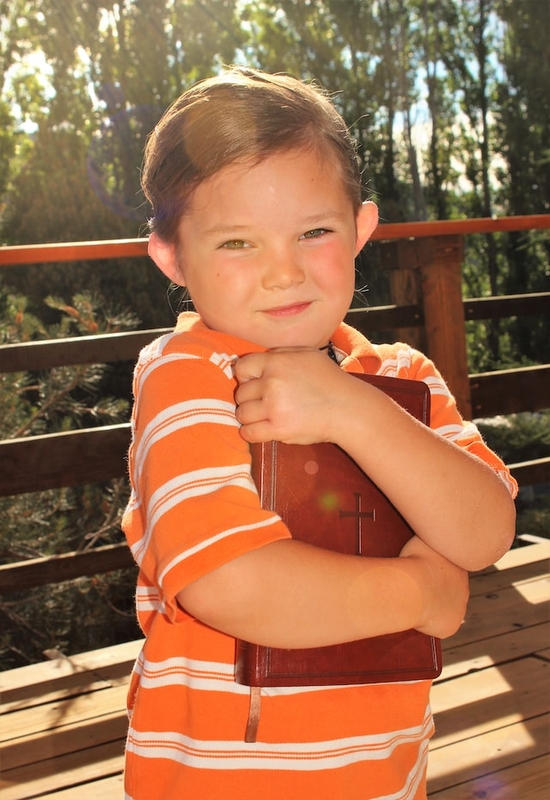Adventist Education System
The Seventh-day Adventist Church operates the largest Protestant education system in the world. A big part of this system is our K-8 elementary schools, or primary schools, as they’re known in other parts of the world..
Let’s begin with the reason they exist in the first place.
What is the mission of Adventist schools?

Every kid is loved by God and gifted in their own unique way. The goal of Adventist education is to equip them with the knowledge they need, and to support their educational process by providing a Christ-centered environment.
At Adventist elementary schools, a high-quality curriculum is accompanied by an emphasis on biblical principles. The focus is in educating the whole person—intellectually, physically, emotionally, and spiritually.
And above all, everything students learn points toward the amazing power and love of God. The faculty and staff want to help each kid form their own relationship with Jesus Christ as they learn to be active participants in their communities.
The programs, activities, and curriculum are all designed to support this “whole-istic” model. Kids are educated with the facts they need to know to meet the standards for each grade level, but the learning experience is enriched with a biblical perspective for each subject, and numerous opportunities for hands-on learning.
After all, the elementary years are foundational for each kid’s educational future. It’s never too early to start teaching kids about the wonders of God’s creation, and we can see His hand in every subject we study.
So how did the Adventist education system come to be what it is today? What sparked the emphasis on Christian education? Let’s go back to the late nineteenth century to look at its origins.
What’s the history of Adventist schools?
The first Adventist school was started in 1872, in Battle Creek, Michigan.
There was also concern that the schooling systems of the time were not rigorous enough. After all, this was around the time of the Second Industrial Revolution, and there was more focus on hurrying kids through school so they could work in the many factories popping up all over the United States.
In fact, sometimes kids would be sent to work without finishing their education at all!
Early leaders of the Adventist Church noticed that this could deprive children from learning important, foundational principles that could guide and structure their lives. So they began building schools that could give the kids the educational framework they needed, along with important biblical principles.
From this humble beginning, the Adventist education system has grown to include everything from Pre-K and TK (Transitional Kindergarten) all the way up to medical and graduate schools.
And as part of this system, Adventist elementary schools can be found in almost every corner of the globe.
By the end of 2020, there were 6,623 Adventist elementary schools, with a total enrollment of 1,268,405 students.1
So what are the perks of attending Adventist Christian schools?
We’ll look at that next.
Benefits of Adventist elementary schools

Photo by Elisabeth Wales on Unsplash
Elementary schools operated by the Seventh-day Adventist Church are fully-accredited private Christian schools. They provide a safe learning environment and a rigorous yet differentiated curriculum to ensure that each student can thrive in this faith-based setting, regardless of their background.
Benefits of attending such a Christian school include:
- Religion classes as part of the curriculum. Students get to learn more about God, the Christian faith, and best of all, they learn how to find a friend in Jesus.
- Biblical principles enhance every subject of learning. Kids learn about God’s creation instead of just evolution, and they’re shown how His creative signature is all throughout science, social studies, reading, art…everything.
- Christian values are cultivated and affirmed in students throughout their social and academic interactions. Values like honesty, kindness and compassion, respect, generosity, etc. This is especially possible because they get to learn from Christian teachers.
- Adventist schools tend to have a smaller student body and a more favorable student-teacher ratio. This helps the school community feel more like a family environment. This also makes it easier for parents to participate in the school life of their kids.
And because they are “Adventist” schools, they also have benefits that cater specifically to Adventist students and their families. Benefits like:
- The school’s philosophy is based on an Adventist worldview, which emphasizes the need for Jesus in our troubled world today. Kids are taught not to fear what is happening around us, but to trust in God to show us the way through challenging situations.
- The Sabbath is upheld in weekly schedules. Respecting this day of rest and enjoyment of God’s creation, extracurricular events are not scheduled on Saturdays (except for worship-related activities). But classes, sports, etc., will not be scheduled during Sabbath hours.
- Students have the opportunity to participate in their local church’s activities and community outreach. Many of our schools have planned mission trips, whether local or farther away. And this instills a love for mission and evangelism in students from a young age.
- Health is emphasized and prioritized. Meals and activities are organized to support the health of kids’ minds and bodies, which can help them be in an optimal state for learning.
What is the difference between private Adventist schools and other schools?
While Adventist schools resemble other private schools in some ways, they carry some differences that stand out.
Here are some areas where Adventist schools are different.
- The cost
Like other private schools, the cost of Adventist education will be higher than public or charter schools. But families that send their kids to these schools realize that they are paying for priceless benefits.
Most Adventist elementary schools offer financial assistance programs or other options to help families that might struggle with tuition costs.
2. The curriculum
The curriculum at Adventist schools is faith-based, knitting Bible principles into everyday learning. This makes Adventist schools different from non faith-based schools.
The curriculum is also designed for both single and multigrade classrooms. Having students in different grade levels studying together allows for peer tutoring, where older students can help the younger.
Some schools can even have students interact with college students and professors from Adventist colleges.
The curriculum can also be tailored to the learning needs of each student, resulting in a more personalized student learning experience.
3. The community

Photo by MI PHAM on Unsplash
When you send your kids to an Adventist elementary school, you’re also joining a family. The close-knit community of Adventist elementary schools is a common benefit described in countless messages of feedback over the years.
While your young scholar is the one actually attending class, your whole family is considered a member of the campus. Faculty, staff, and volunteers want to support you as a family unit, and to help your kids succeed in their education and development.
Some things to consider:
While the benefits of Adventist education are abundant, it’s important to consider that as a smaller private school, there are some ways we won’t be able to compare to a state-funded public campus.
Many of our schools are not able to provide a full special education program, a gifted student curriculum, or specific/specialized extracurricular activities.
But to compensate for these in a positive way, most Adventist schools provide robust child development programs to cultivate students’ gifts and usefulness.
We’ll look at these next, and what to expect at an Adventist elementary school.
What should you expect at an Adventist school?

Photo by National Cancer Institute on Unsplash
Walking into an Adventist school, you’ll most likely first see what you consider normal for a school—classrooms, buses, sports fields, etc.
Some schools have both elementary and high school grade levels on the same campus. So you’ll see students of all ages, all the way from kindergarten to 12th grade.
But as you give it a closer look, you’ll probably notice the caring, Christian atmosphere.
Classes often start with prayer and devotion from the teacher or a student.
Teachers are lovingly committed to their students, willing to work with them and help them in their own personal journey.
You’ll likely notice how many students are involved in various activities, depending on the time of the day or season during the school year.
They could be in class learning, out in the field playing a game for physical education, or in the cafeteria enjoying a healthy meal.
There are also facilities for students to nurture their talents in areas like fine art, visual arts, STEM activities, and music. And students are also encouraged to participate in various athletic programs like softball, basketball, gymnastics, track and field, etc.
With all these benefits to a student’s experience, Adventist education has proven to be an excellent choice for many parents and students.
But you don’t have to take our word for it. Let’s look at the data.
Studies and statistics about Adventist schools
A couple significant research studies have shown that Adventist grade schools can be a highly beneficial choice. Let’s look at each of them:
1. The Cognitive Genesis Study
This study was conducted at La Sierra University between 2006 and 2010.
It showed that Adventist grade schools outperformed the national average in all subjects, grades, and in schools of all sizes.
This means that students have a higher graduation rate and college acceptance.
According to the study, the result is due to Adventist schools’ focus on each student as a whole person. It’s recognized that these kids need guidance not just in memorizing information, but learning how to apply it to each aspect of their early lives, including their spirituality.4
2. William H. Jeynes’ Study

Photo by CDC on Unsplash
Dr. William H. Jeynes, a professor of education at California State University, conducted a study that compared academic performance between religious, public, and charter schools.
The study showed students attending faith-based schools were academically ahead of their counterparts by about a year.
And here’s where it gets even more interesting.
When students in Adventist elementary and middle schools were included in the study, they were about 10 months ahead of their counterparts, including other Christian schools.
And even considering factors like socioeconomic status, race, and gender, they were still 5 months ahead.
Jeynes also noted that the gap increased in high school students who have attended Adventist schools longer. This shows how this advantage can compound over time.
There was also a social and behavioral advantage in Adventist schools. Adventist campuses often showed a higher level of student diversity, as well as fewer behavioral problems on campus, and a greater degree of harmony between students of different races and backgrounds.5
And apart from academic excellence, Adventist schools also nurture students’ God-given gifts and talents. They even produce great student athletes, who often go on to play in varsity teams.
But above all, Adventist schools cultivate the spiritual lives of students. They aim to provide a solid Christian foundation for their young lives.
Adventist elementary schools prepare students for eternity
It will always be the goal for Adventist elementary schools to provide students with a holistic Christian education. We want to prepare each and every kid to love themselves as an individual, as a child of God, and as a blessing for their community and for society, both now and for eternity.
